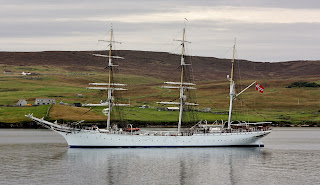 |
Roel Puijk - Slow TV
ISBN 9781789382013 |
A dedicated book on Slow Television in Norway is being released by Intellect Books on 31st May 2021. By media scholar, Roel Puijk, it is the first dedicated publication to examine Norwegian Slow TV. The Minute-by-Minute projects remain some of the most surprisingly successful TV shows in Norway, with hit ratings and representing Norway around the world.
The cover shows the patriotic flag-waving which features in many of the Slow TV projects, the adventurer Lars Monsen on hike - showing the Norwegian love and participation in the great outdoors, and also the ferry line, Hurtigruten, whose voyage was covered from Bergen to Kirkenes in a record-breaking broadcast.
Intellect Books' entry reads,
"Slow TV has become a familiar feature of broadcasting in Norway. It refers to a set of programmes produced by the Norwegian Broadcasting Corporation (NRK) since 2009, starting out with a seven-hour broadcasting of the train ride between Bergen and Oslo.
The concept of slow TV and ‘minute-by-minute’ broadcasting was developed so that the event on television lasts as long as in real time. Several broadcasters outside Norway, including BBC Four, YLE, SRF and Netflix, have now taken up the concept of slow TV.
The first study of this genre, this highly original book explores three different aspects of the phenomenon of slow TV: the perspective of the broadcaster, the perspective of the producers and other actors involved in the production of the programme, and that of the audience.
It goes beyond the question of genre and considers how slow TV fits into television scheduling and how the audience appeal can be understood within broader concepts such as media events, media tourism, reception and national identity. Public service broadcasters can be seen as having more opportunity to experiment, and slow TV can be seen as a good example of public service programming. What attracts viewers to the programmes is that they invite a contemplative mode of watching: there is a chance to see something unexpected, or to be introduced to interesting new things.
Illustrated throughout in full colour, using stills from broadcast programmes.
This book will appeal primarily to an academic readership, both researchers and students. Most readers are likely to be involved with media and communication studies, cultural studies and film studies. It will also be of interest more generally to the humanities and social sciences fields as it touches on topics such as national and local identity, popular culture, Nordic lifestyle, well-being, tradition, community and popular culture."
The book is available to order from the publisher and other retailers.
New to The Slow TV Blog? See The Slow TV Blog media centre.
Slow Television - The Slow TV Blog





